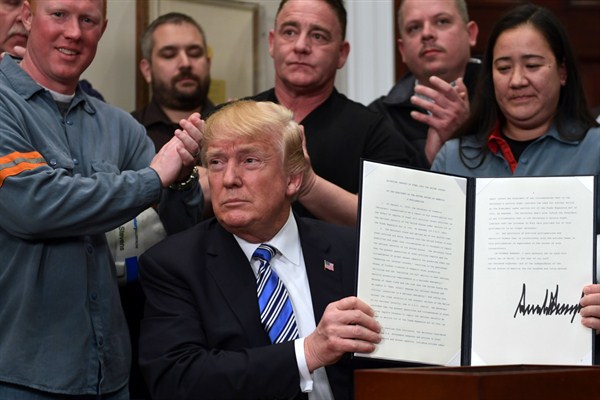U.S. President Donald Trump on Thursday signed an order imposing tariffs on steel and aluminum imports. The tariffs, which will go into effect in 15 days, exempt Canada and Mexico for now, with the possibility of other states to be exempted as well. Combined with the resignation earlier this week of Gary Cohn, the president’s chief economic adviser who had been seen as a check on Trump’s protectionist instincts during his tenure as director of the National Economic Council, they signal that Trump is ready to make good on campaign promises of getting tough on trade—and in particular with China.
With China’s accession to the World Trade Organization in 2001, the country appeared to be heading toward smooth integration into the global economy. The previous decade of reforms had pulled the country away from state intervention and toward market-economy status. Over the next 15 years, China’s trade in goods grew eightfold, and it became the largest trading partner of more than 120 WTO members. Multinational firms embraced China as a location for offshore production, making it the third-largest recipient of foreign direct investment in 2016, behind only the U.S. and the U.K.
Nevertheless, a broad consensus is now emerging among China’s largest trading partners that mercantilist policies are replacing WTO-based commitments to market opening. In December 2017, on the sidelines of a WTO meeting, the European Union, Japan and the U.S. issued a statement challenging Chinese excess capacity in steel and other sectors, as well as Beijing’s industrial subsidies, state financing and rules requiring foreign investors to share technology with local partners. Not content to wait for WTO action, the United States, led by an administration that views trade through the lens of job loss, is now set to take unilateral actions that portend a bilateral trade war with global implications.

